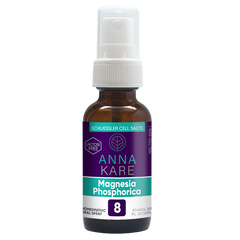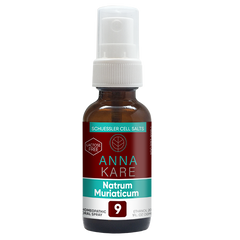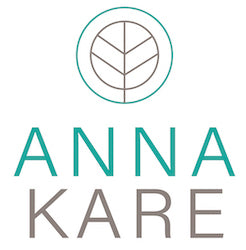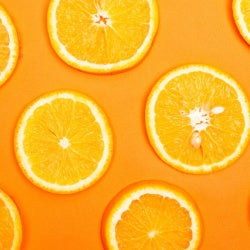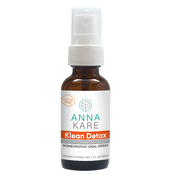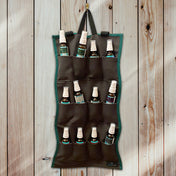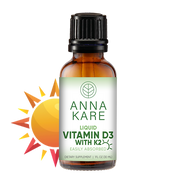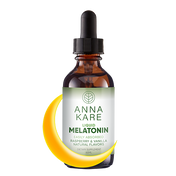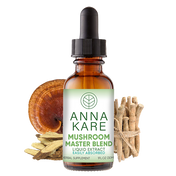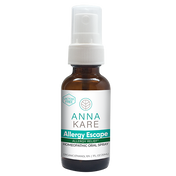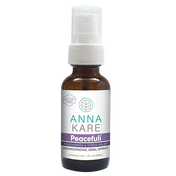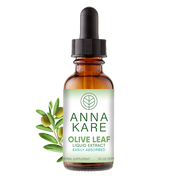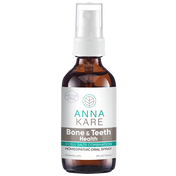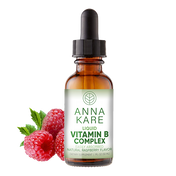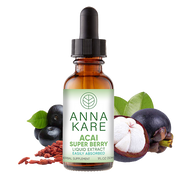The Fascinating History of Facial Diagnosis
The human face is a mirror of our health, reflecting the intricate balance of minerals within our bodies. This concept, known as facial diagnosis or facial analysis, is rooted in Dr. Wilhelm Schuessler’s biochemic therapy and his belief in detecting cell salt deficiencies in your face first mentioned around 1874.
For a long time, this practice was primarily performed in Germany or German-speaking countries where books and trainings were available. This topic – especially the original facial diagnosis as established by Dr. Kurt Hickethier – has yet to receive the broader attention it merits.
As such, we are bringing this topic to light, that it so richly deserves, in the first blog in the U.S. that relates directly to Dr. Schuessler’s and Dr. Hicketheir’s founding of the facial diagnosis.
Let's explore the captivating history behind this practice and how it can help you identify your own mineral needs.
The Origins of Facial Diagnosis: Dr. Wilhelm Schuessler's Pioneering Work
In the late 1800s, Dr. Wilhelm Schuessler, a German physician, developed the concept of 12 essential cell salts (also known as tissue salts). These minerals are crucial for optimal health.
While Schuessler repeatedly drew attention to the fact that cell salt deficiencies could be observed in the face, he never formally documented these signs.
Kurt Hickethier: Documenting the Art of Facial Analysis
The true developer of systematic facial diagnosis was Kurt Hickethier, a German naturopath born in 1891. Hickethier's personal struggle with Bechterew's disease – a type of arthritis that primarily affects the spine – led him to discover Schuessler's cell salt therapy, which dramatically improved his health.
He became fascinated by the potential of facial analysis, started to research it tirelessly in 1910, and eventually published his groundbreaking book Sonnerschau: Textbook about the Facial Diagnosis, establishing the foundation for facial diagnosis with Schuessler tissue salts.
Because of his dedication and hard work in the field of facial diagnosis and biochemistry, he was awarded an honorary doctorate of Dr. of Naturopathy by the Pittsburgh College of Naturopathy in the U.S. in 1926.
Hickethier placed immense importance on the meticulous spread of facial diagnostics and believed in only the highest quality of training. Only students who completed a rigorous six-year training course at his Sonnerschule in Ellrich were authorized to call themselves “Sonner.”
Sonner is a term that translates to “bringer of the sun” and is derived from the old German word “Gesonntheit” which means health. “Sonner” Hermine Depke (later Pfotenhauer, 1903–1949), “Sonner” Luise Depke (1905–1986), and “Sonner” Charlotte Depke (1907–1998) worked alongside him helping with his research.
The Depke sisters continued to spread Hickethier’s life’s work, always adhering to his principles, even after he passed away on February 2, 1958.
Fortunately, while Hickethier would never see the completion of his new Naturopathy Center in Kemmenau, his dream lives on and detecting cell salt deficiencies via his original facial diagnosis is still practised there today.
The Spread of Facial Diagnosis Across Europe and Beyond
Hickethier's work gained significant traction in Europe, particularly in Germany. By the early 2000s, facial diagnosis had become widely practised, with numerous organizations dedicated to its study and application, frequently expanding on the original method.
The popularity in the United States of a mix of facial diagnosis techniques as they existed in Europe in 2002 is largely attributed to David Card's book Facial Diagnosis of Cell Salt Deficiencies, which introduced the methods of Hickethier and his followers to an American audience.
In this book, Card discusses how deficiencies in diet and metabolism together with disease conditions can be observed in the face if you or your holistic health practitioner know what to look for.
Card's book is viewed today as an efficient tool for health practitioners and home prescribers and can be purchased online or in your nearest bookstore.
Understanding the Basics of Hickethier’s Original Facial Diagnosis
At HomeopathyStore, we like to unearth and present you with the most authentic information about traditional healing methods. The Hickethier Facial Diagnosis, or “Sonnerschau,” was and is till this day characterized by several specific criteria:
- Age Independence: The results of the facial diagnosis are independent of the patient’s age.
- Preparation: The face must be free of makeup or facial creams since the night before the appointment.
- Lighting Conditions: The diagnosis cannot be performed outdoors or in a room with tinted windows. It requires natural light and cannot be conducted via photographs.
- Distinct Signs: The method works with 24 distinct facial signs, no more and no less.
- Evaluation Criteria: Practitioners look for three specific aspects in the face: color/tone, shine, and structural signs with color and shine being the most important.
As you can see, Hickethier's original method is extremely precise, utilizes only 24 specific signs and requires a trained eye to detect them.
It is possible, however, through familiarity with the use of cell salts and dedication to learning more about them, that one can train yourself over time to diagnose and self-diagnose a deficiency in cell salts.
Hickethier's 4 Main Cell Salt Deficiencies
While Hickethier's complete system is complex, he identified four primary cell salt deficiencies that, although not easy to observe, affect all of us living in a time of industrial farming, environmental pollution, and nutrient-depleted soil.
Learn to look for the following different skin tones and shines and prioritize these four cell salts in your daily use. All four deficiencies are easier to identity when sitting opposite a person and allowing sufficient space/distance in neutral daylight indoors without glare.
1. Cell Salt Calc Phos #2 Skin Tone and Shine
Waxy, pale, and white with a slight tinge of yellow (cheesy) on the forehead, nasal root, tip of the nose, nasal wings, and ears.
2. Cell Salt Kali Mur #5 Skin Tone and Shine
Cold, milky white with a blue tinge, like alabaster. Occurs all over the face and can be best detected around the eyes and in the nasolabial area below the nose and all the way down to the chin.
3. Cell Salt Kali Sulph #7 Skin Tone
Yellowish brown. Like with Kali Mur, the color can appear in the entire face but particularly around eyes and nose and in the triangle from below the nose to the chin.
4. Cell Salt Mag Phos #8 Skin Tone
Red on the entire face. It is a delicate red that comes and goes and can intensify quickly with stress and exertions and when one is embarrassed or shy; it is a red that is not hot to the touch.
Hickethier’s 4 Easiest-to-Spot Facial Signs
Here are four more Hickethier facial signs that you possibly can easily detect yourself in your face or the face of others:
1. Cell Salt Ferrum Phos #4
Black shadows under the eyes show exertion and inflammation after a workout or when one is sick or getting sick.
2. Cell Salt Nat Mur #9
Big pores are a sign of an imbalance in the body’s water and sodium levels which cell salt Nat Mur regulates.
3. Cell Salt Nat Phos #10
Blackheads and oily skin appear due to a lack of cell salt Nat Phos which helps metabolize fat.
4. Salt Silica #12
Deep eye sockets above the eyeball indicate a deficiency of cell salt Silicea or Silica and other nutrients which Silica helps the body to assimilate.You can read further about these and more tissue salt deficiencies and facial signs in our blog Schuessler Cell Salts and the Facial Diagnosis and how it is practised around the world today.
The Legacy of Facial Diagnosis
Today, facial diagnosis with cell salts continues to be a valuable tool in naturopathic and homeopathic practices worldwide. While it does require a learned skill and experience to master, understanding the basics can help individuals take a more proactive role in their health and wellness.
Remember, your face tells a story about your health. By learning how to read these signs, you can take important steps toward achieving optimal mineral balance and overall well-being.
Please note: Content and product descriptions are grounded in traditional homeopathic practice. The information in this article has not been evaluated by the Food and Drug Administration.








